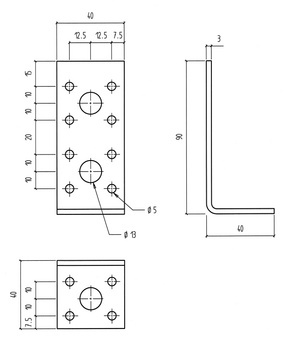Angle connector type B2 For timber structures, short, solid 3 mm design
Angle connector B2
ANGL-WOCON-B2-40X40X90X3,0

Register now and access more than 125,000 products
- Minimal misalignment between wooden structure and concrete anchor
- Low bulk, slim design
- Sheet metal hot-dip galvanised on both sides (DX51D + Z275 [approx. 20 µm]) in line with EN 10327:2004
- Application in utilisation classes 1 and 2 in line with EN 1995:2013
ETA-09/216
The diameter of bolts/screws/anchors may only be max. 2 mm smaller than the diameter of the hole. The respective basic conditions of the applicable anchor approval must be observed.
ETA-09/216
Subject to technical changes!
Datasheets(X)
Load-bearing connections of timber joists to wood or concrete such as joist to joist, purlin to joist, joist to concrete substrate.
Suitable fasteners:
- Comb/ribbed nail in line with EN 14592: 4.0 x 40 mm
- ASSY 3.0 combination screw in line with ETA 11/0190: d = 12 mm
- Bolts according to manufacturer specification: d = 12 mm
- Recommended dowels for anchoring in concrete: W-BS; W-FAZ; W-VIZ; WIT-VM 250; WIT-UH 300
 | |
Type | B2 |
Width x height x depth | 40 x 90 x 42 mm |
Thickness | 3 mm |
Design | Without bar |
Number of D 13 mm holes in subcarrier nJ/main carrier nH | 2 + 1 PCS |
Number of D 5 mm holes in subcarrier nJ + main carrier nH | 8 + 4 PCS |
Approval | ETA-09/0216 |
Product weight (per item) | 100.360 g |
Material | Steel |
Surface | Hot dip galvanized |
Weight | 98 g |
Material designation | DX51D |
Material standard | DIN EN 10327:2004 |
Number of D 5 mm holes | 12 PCS |
Number of D 13 mm holes | 3 PCS |







